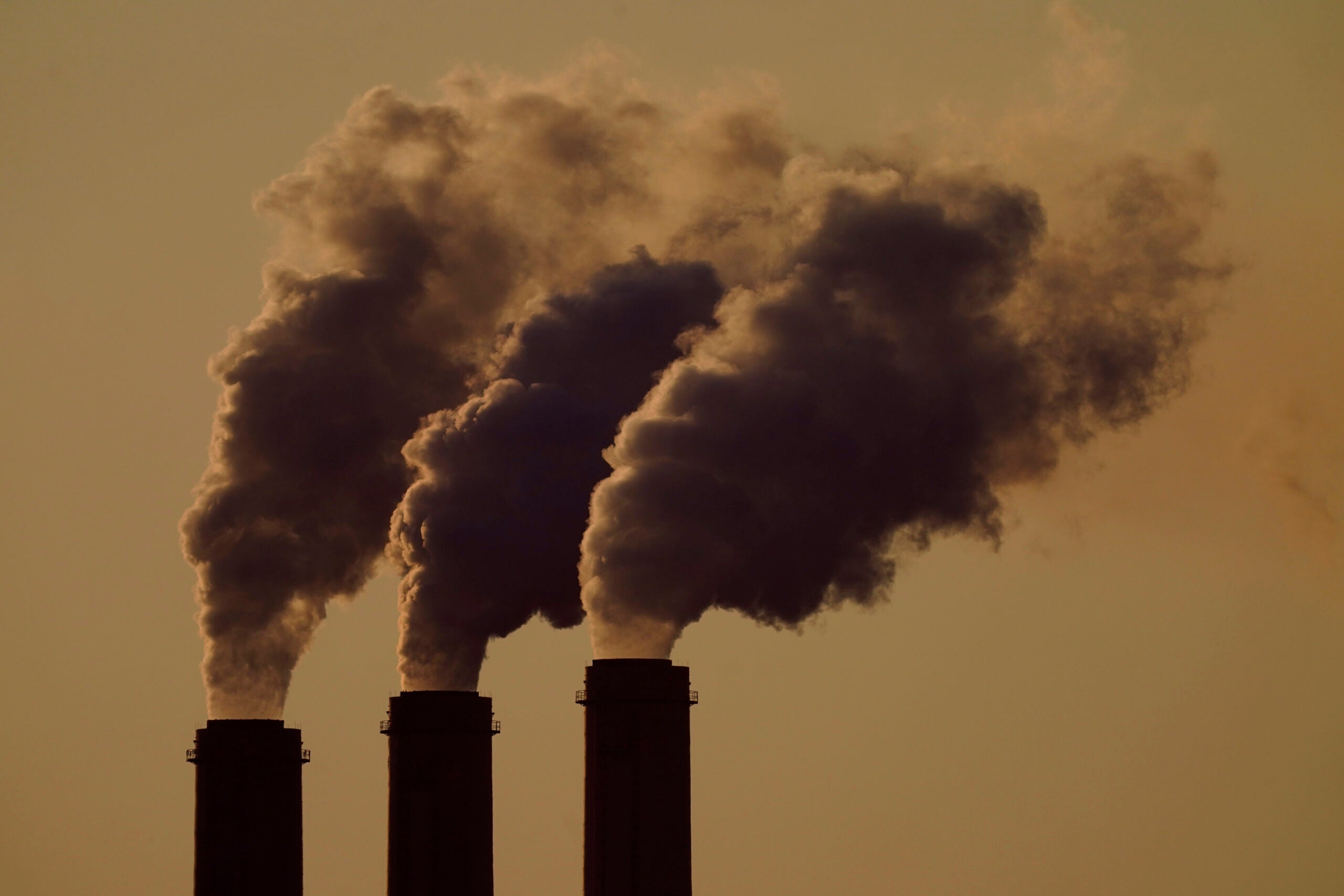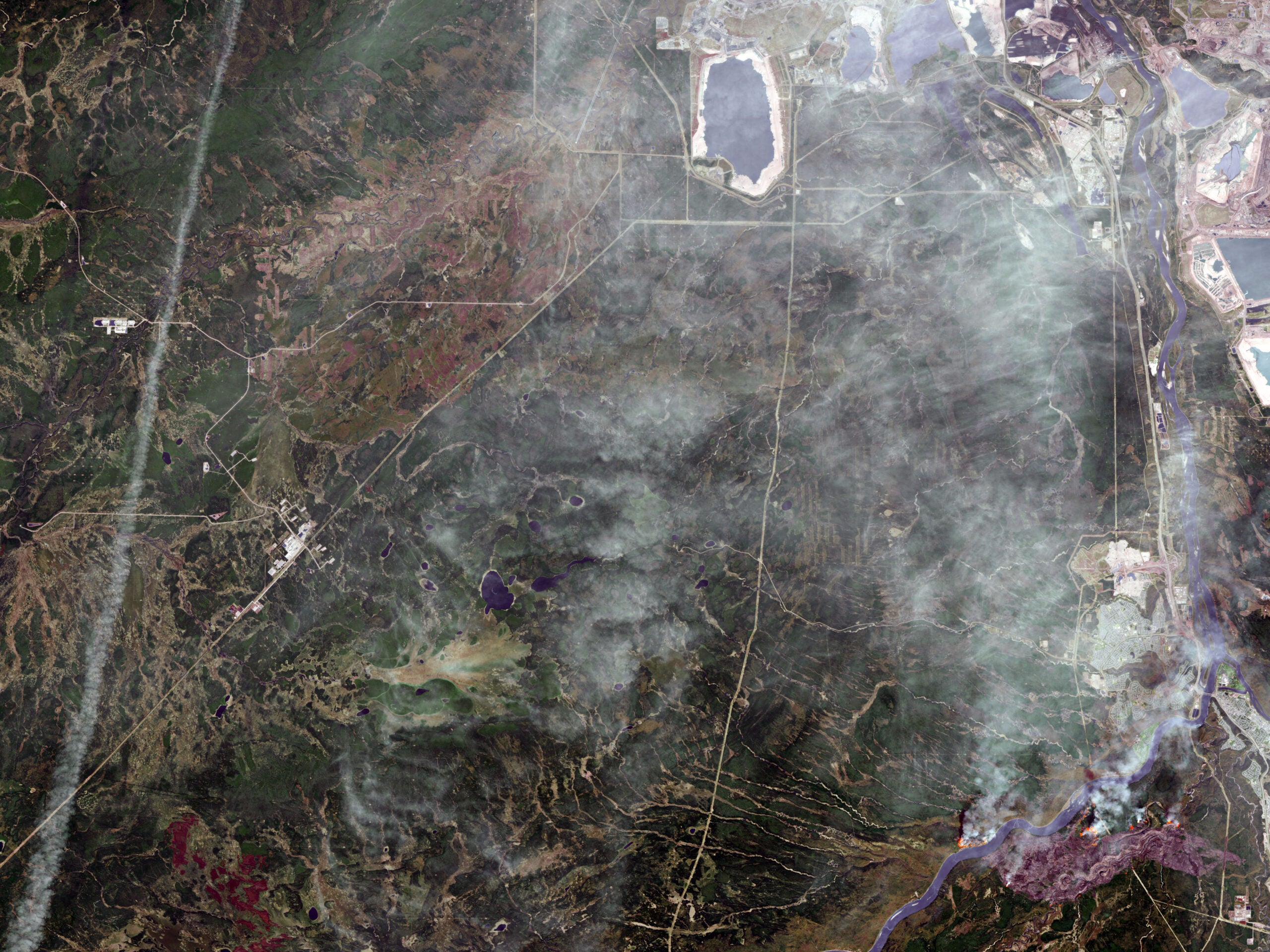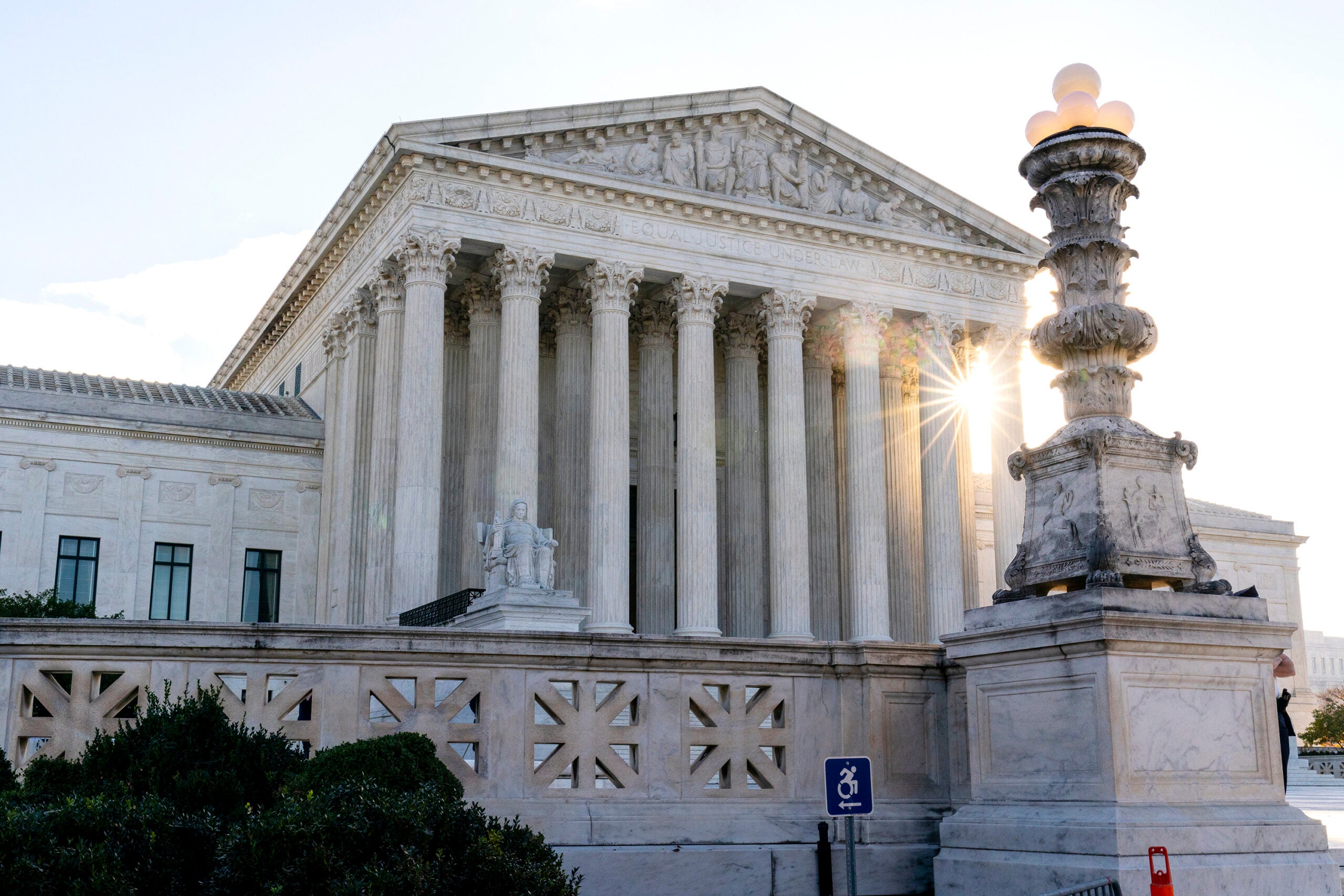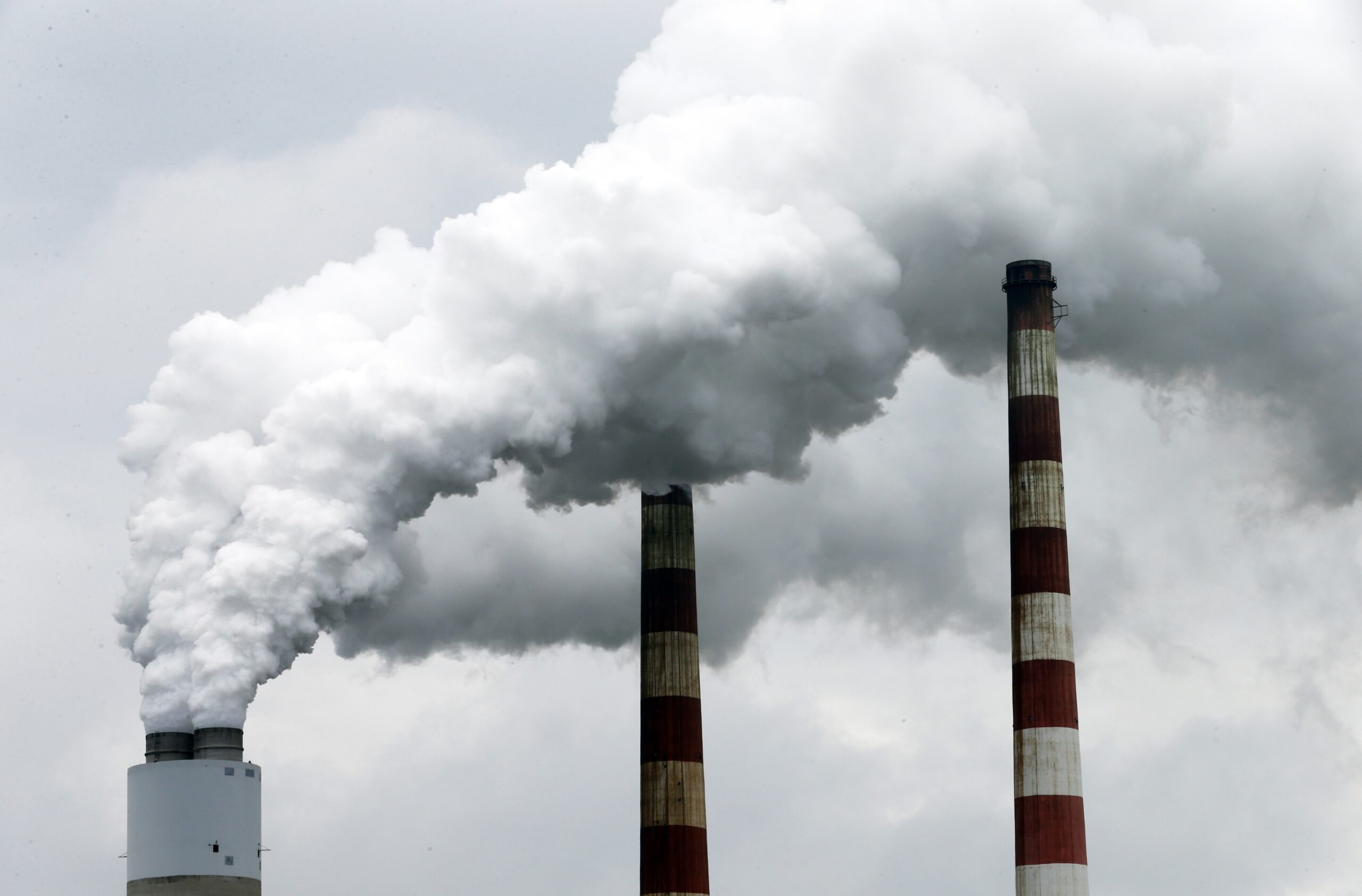A plan from the Environmental Protection Agency is proposing tougher pollution standards aimed at reducing smog, but some industrial groups complain the changes will be too costly.
Through the Good Neighbor Plan, introduced in March last year, the EPA would ramp up controls to limit pollution from coal- and gas-fired power plants and, for the first time, regulate certain industries in Wisconsin and 22 other states whose emissions affect air quality in other states. Among those which might be affected — if the plan is approved — are industries like cement makers, glassmakers and paper mills.
Tracey Holloway, an air quality researcher and professor at the University of Wisconsin-Madison, said air pollution rules are controversial, in part, because they’re expensive to enforce.
Stay informed on the latest news
Sign up for WPR’s email newsletter.
“This idea that we can be downwind from one state and upwind from another state makes it tricky to figure out what is the right way to write a policy. But there’s no question that air pollution does flow from state to state,” she said.
Environmental advocates have praised the plan while industry leaders say Wisconsin should not be held responsible for pollution coming from outside the state. And according to the Wisconsin Department of Natural Resources, much of the smog-producing pollution in counties along the Lake Michigan shoreline, including Kenosha, drifts north from neighboring Chicago and Cook County, Illinois.
John Antaramian, mayor of Kenosha, said the air pollution limits businesses, particularly east of Interstate 94 in Kenosha County. But more importantly, he said, is how it affects people’s quality of life.
Antaramian said the federal government should rethink its approach to managing air quality.
“They need to start focusing more on where the pollution is coming from, not where it’s going,” he said.
Antaramian said Illinois isn’t the only state to blame. Others like Indiana also contribute to air pollution in Wisconsin.
Holloway of UW-Madison said that since limits on emissions from industrial sources were imposed through the Clean Air Act, the air has been getting cleaner across the United States and in Wisconsin. But many areas are still seeing air pollution levels exceed the EPA’s health standards, which may not be strict enough, new research suggests.
Two main pollutants of concern, she said, are ground-level ozone — often called smog, an invisible gas — and fine particulate matter, which are solids or liquids suspended in air so small they’re invisible to the human eye. Smog, cooked up in the presence of sunlight from nitrogen oxide and volatile organic compounds, is associated with respiratory diseases like asthma as well as other health issues, like shortened life expectancy and elevated risk of heart disease.
The federal Clean Air Act requires the agency to review and set national air quality standards every five years. The EPA is considering lowering its current daily standard for fine particle pollution from 35 to 25 micrograms per cubic meter. The agency is also hoping to beef up annual standards from 12 micrograms per cubic meter to between 9 and 10 micrograms per cubic meter.
“It’s basically saying that even when it’s a bad air day, we’re putting a cap on how bad we will allow it to be without flagging a violation. And the annual standard is recognizing that some days are worse than others,” Holloway said.
According to the DNR, Wisconsin is susceptible to high-ozone levels, particularly along the Lake Michigan shoreline due to geography, meteorology and greenhouse gas emissions from outside the state.
“Ozone-causing pollutants emitted by upwind states are transported over the lake, where they are turned into ozone, which is then carried onshore via lake breezes. As a result, Wisconsin’s lakeshore counties tend to measure elevated ozone levels,” the agency wrote in an email.
The DNR said the EPA estimates “Wisconsin sources contribute no more than 10 percent to the ozone measured at its highest monitors. All other states are responsible for around 49 percent, with other, non-state sources (like international emissions) contributing the remainder.”
The Wisconsin Manufacturers & Commerce group, which represents 3,800 companies, in June last year sought a state exemption from the EPA’s proposed ozone transport rule. The business association wrote the EPA “has proposed extremely burdensome regulations that will unnecessarily hurt Wisconsin manufacturers.”
“WMC believes Wisconsin manufacturers and businesses should not be punished for air emissions originating from outside of the state,” said Craig Summerfield, WMC Director of Environmental & Energy Policy, in a statement to Wisconsin Public Radio.
Chelsea Chandler, the climate, energy and air program director for Clean Wisconsin, an environmental advocacy group, cautioned people “don’t point fingers and say it’s somebody else’s problem.”
“We all need to take responsibility and work towards our collective good health and well-being and work to decrease pollution emissions, both in Wisconsin and in our neighboring states, and even further out,” she said.
Chandler said a vibrant, healthy economy should not conflict with clean air — rather, the two go hand-in-hand.
“Every time a kid is missing school because of an asthma attack, every time a life is cut short, these are damages that we can’t quantify on some level. And on another level, we actually can look at the impact in terms of the added health bills, in terms of the lost workdays and the loss of production,” she said.
The EPA estimates that in 2026, the first year of its implementation, the plan will save 470,000 missed school days and dodge some 1.3 million asthma cases. The agency estimates the proposal would also prevent about 1,000 premature deaths and 2,400 hospital and emergency room visits.
Claire Gervais is a family medicine physician in Madison. She’s also a member of the Wisconsin Environmental Health Network and Wisconsin Health Professionals for Climate Action.
“I would hope that there’ll be more momentum with people, with physicians, with community members that public health is more important than these industries’ pocketbooks,” she said.
Gervais encouraged people to sign up for air quality alerts to make sure they aren’t breathing in bad pollutants.
The EPA’s Good Neighbor Plan could be finalized by March 15.
Wisconsin Public Radio, © Copyright 2025, Board of Regents of the University of Wisconsin System and Wisconsin Educational Communications Board.







